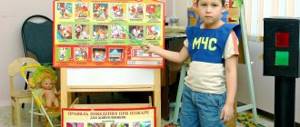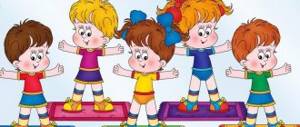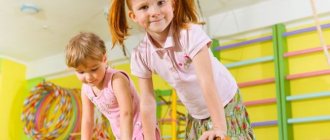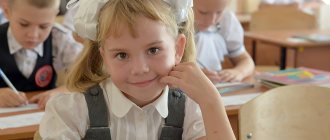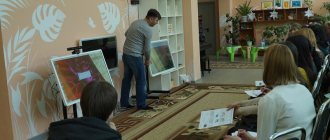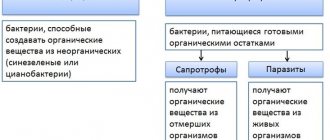“Formation of the fundamentals of life safety in preschool children”
Author: Buvaeva Galina Nikolaevna “Formation of the foundations of life safety in preschool children”
Educator:
senior group No. 6
Buvaeva G.N.
On the threshold of the third millennium, the need to find a mechanism for developing in the younger generation a conscious and responsible attitude towards issues of personal safety and the safety of others became urgent due to the increasing frequency of manifestations of the destructive forces of nature, the number of industrial accidents and disasters, dangers of a social nature, and the lack of skills of correct behavior in various threatening and emergency situations (B. Mishin, A. Smirnov, etc.) Knowledge about the basics of safety is necessary at all stages of a person’s life; work on the formation of this knowledge must begin from preschool age. (N.A. Avdeeva, A.A. Baranov, G. Kazantsev, O.L. Knyazeva, R.B. Sterkina)
The topic of educating children to behave safely has become particularly relevant nowadays. In recent years, the number of domestic injuries in children of preschool and primary school age has increased. Statistics show that the number of accidents on reservoirs involving children of preschool and primary school age has increased. Often children's pranks with fire are the cause of fires. According to the Russian Ministry of Internal Affairs, the number of children involved in road accidents and children who are victims of violence has increased. This cannot but cause concern. Preschool age is characterized by an increase in motor activity and an increase in the child’s physical capabilities, which, combined with increased curiosity, the desire for independence, and the desire to constantly discover something new, often expose the child to real dangers. Children are characterized by active cognition of the world around them, an excess of energy, and the desire to imitate adults, but they do not have that protective psychological reaction to various situations that is characteristic of adults.
The goal of the work is to develop in students stable knowledge and skills of safe behavior in various life situations. To achieve the goal, the following tasks were set:
Determine the forms of content of work on developing life safety in children
Create a subject-development environment
Select didactic and gaming material
Create conditions for organizing interaction between family and preschool educational institution
The content of the work is aimed at developing the cognitive activity of preschool children. When selecting content, the degree of significance was taken into account
theoretical and practical knowledge and skills in children in maintaining and promoting health in everyday life, in increasing the motivation for independence and cognitive activity, in deepening knowledge of the basics of life safety.
Games have been selected that are aimed at deepening knowledge and developing skills such as analysis and synthesis, comparison, establishing cause-and-effect relationships, classification, and solving problem problems. The inclusion of tasks of varying levels of complexity corresponds to the principle of individualization and differentiation of learning and allows you to develop and stimulate the expansion of knowledge and improvement of skills in preschoolers at different levels of education.
The leading methods are:
ü methods of a partial search, search, problem nature, stimulating the cognitive activity of preschoolers.
ü verbal (conversation, discussion, discussion in pairs, small groups).
ü visual (demonstration of various objects, items, experiments, paintings, etc.).
ü practical (practical actions, experiments, etc.)
The forms of practical work with children in preschool educational institutions are quite diverse and provide for the following forms of training:
ü Collective (conversation, discussion, explanation, etc.).
ü Group (discussion of the problem in subgroups, solving tasks, quizzes, etc.)
ü Work in pairs (completing tasks, searching for answers on cards, etc.).
ü Individual (individual practical and theoretical assignments, individual control). Basic teaching aids:
ü Didactic games.
ü Methodological manuals.
üVisual materials (multimedia equipment, paintings, illustrations, posters, brochures, etc.)
The formation of sustainable knowledge and strong skills in a culture of safe behavior for children in everyday life, on the street, in nature, in transport is carried out through all available forms and methods of work (classes, conversations, excursions, walks, observations, reading fiction, dramatization, quizzes and leisure evenings, etc. .d.)
Direct educational activity is one of the forms of direct transfer of knowledge in a certain system and sequence, an important link in mental education in preschool educational institutions. The content of a particular lesson is selected and structured by the teacher based on the requirements of the thematic plan and the program on the basics of life safety, taking into account the level of development of educational and cognitive skills, individual and age characteristics of children.
ECDs are held once a week, the duration of the lesson depending on the age of the students. The program is designed for 36 working weeks (from September 1 to June 1). During the holidays, entertainment, holidays, quizzes, and leisure activities are held according to the sections of the program.
The program “Formation of the fundamentals of life safety for older preschoolers” defines the knowledge and skills that every child must master for successful intellectual and social development, developing skills of adequate behavior in various unexpected situations, and mastering the rules of safe behavior.
The main content of the work under the program is structured in the following areas:
1. Child and other people
2. Child's health
3. Child and nature
4. Child at home
5. A child on the city streets
An important factor regarding the formation of the foundations for safe behavior of preschool children is the interaction of the preschool educational institution and the family.
The main goal of working with parents is to help them realize the importance and significance of their direct participation in protecting the health of their child, personal and social responsibility for him.
Their task: to help children realize that health is the main value of every person and he is responsible for it himself. And, of course, parents must understand the role of uniform requirements and convince them that they can teach children to avoid dangerous situations that lead to injury, develop a sense of caution in the child, and instill knowledge of the basics of safety.
Work with parents is carried out both individually and frontally.
The forms are varied and include:
— conducting conversations and consultations;
— parent meetings and conferences;
— participation in sports competitions, holidays, entertainment;
— design of moving folders;
— a survey, the purpose of which is to identify parents’ compliance and understanding of the problem of children’s safety in various life situations, planning work for the future.
The mobile folder contains information about the material covered, its content is revealed, and recommendations are given for parents on reading fiction, memorizing poetry, and rules of conduct for didactic and verbal games. The materials change periodically depending on the topic being studied and the time of year, as childhood injuries vary seasonally, offering guidance to parents.
Parents' answers to questionnaires help plan work with parents. Based on the results of the survey, one can judge the effectiveness of targeted, joint work with parents to form the foundations of children’s life safety. Introducing parents to the general pedagogical and medical requirements, it is necessary to take into account the specifics of the family, each child, and the questions that arise, I conduct in an individual conversation. Parents take an active part in sports activities and holidays.
Work with parents is planned, the purpose of which is:
Strengthening pedagogical propaganda among parents to develop safe behavior skills in emergency situations in life and family. Projects are being implemented with parents, “Children’s car seat” campaigns are held, parent safety meetings are held with the invitation of traffic police officers. The program “Formation of the fundamentals of life safety for older preschoolers” defines the knowledge and skills that every child must master for successful intellectual and social development, developing skills of adequate behavior in various unexpected situations, and mastering the rules of safe behavior.
The main content of the work under the program is structured in the following areas:
1. Child and other people
2. Child's health
3. Child and nature
4. Child at home
5. A child on the city streets
The main goal of working with parents is to help them realize the importance and significance of their direct participation in protecting the health of their child, personal and social responsibility for him. Their task: to help children realize that health is the main value of every person and he is responsible for it himself. And, of course, parents must understand the role of uniform requirements and convince them that they can teach their children to avoid dangerous situations that lead to injury, develop a sense of caution in the child, and instill knowledge of the basics of safety.
Work with parents should be carried out both individually and frontally. The forms are varied and include conducting conversations and consultations, visiting families at home, organizing special lectures, competitions, holidays, entertainment, surveys, as well as preparing travel folders.
It is necessary to encourage parents to think about the safety issue and understand that dangerous situations occur quite often and the possibility of injury to their own child cannot be ruled out. Clearly explain the facts that underlie behavior, at the origins of childhood traumas, convince them that much can be prevented if you constantly solve problem situations with the child on the road, at home, in nature. Persistently and patiently explain the rules to children, and be an example in this. Incorrect behavior of parents in front of a child can erase all acquired knowledge on the basics of life safety.
Thus, from the above we can conclude that a well-organized system of work to form the foundations of life safety for preschool children will help increase the level of cognitive activity, the formation of a conscious and strong assimilation of knowledge and skills in the basics of safety.
Literature
1. Avdeeva N.N., Knyazeva O.L., Sterkina R.B. "Training manual
on the basics of life safety for senior preschool children
age" // "Childhood - press", 2004.
2. Belaya K.Yu., Zimonina V.N., Kondrykinskaya L.A. "How to ensure
safety of preschool children" M. "Prosveshcheniye", 2000.
3. Volodin V.A. “Encyclopedia for children” // Personal safety M.:
Avanta +, 2001
4. Voronin D. “Dangerous Fun” M.: Avanta +, 2002.
5. Vishnevskaya E.L., Barsukova N.K., Shirokova T.I. "Security basics
vital activity" M. "Russian Word", 1995.
6. Gatkin E.Ya. “Child Safety” M., Lit, 1997.
7. Dubyagin Yu.P., Bogacheva O.P. "School of Survival or 56 Ways
protect the child" M.: Pikhta; M.: Double V, 1997.
8. Dzybova M.M. "Life Safety" M. Publishing House
"Dick", 1998
9. Kalamkaryan R.A. “Legal provision of human security” //
State and law, No. 7 – 1999.
10. Kazakov V. “Games are like life” // Security Fundamentals
Life activities No. 6 – 2000
11. Kartushina M.Yu. “We want to be healthy” M., 2004.
12. Leontyeva M.R. « About teaching the basics of safety
life activity" // Primary school, No. 9 - 1999.
13. Makhanev M.D. “Education of a healthy lifestyle” M., 1997.
14. Orlovsky I. “How to find Antoshka: A guide to action in
emergency situations" // Public education, No. 3 - 2004.
15. Ocharov E.A. “Health of the population of the Russian Federation: analysis and
assessment" Nizhnevartovsk 1996
16. Ponomareva O. “If you don’t look with your eye, you’ll pay with your side: use
folklore in teaching life safety” // Security Fundamentals
Life activities, No. 4 – 2004.
17. Sapronov V. What kind of subject is this - life safety? // Fundamentals of Safety
Life activities No. 8 – 2002
18. Sinkov Life Safety Classes // Fundamentals of Life Safety
No. 11 – 2002
19. Khromtsova T.G. “Education of safe behavior of preschool children on the street”,
M. 2007
20. Khromtsova T.G. “Education of safe behavior at home”, M 2005.
21. Chupakha I.V., Puzhaeva E.Z., Sokolova I.Yu. "Health-saving
technologies in the educational process" M., 2003.
Author: Buvaeva Galina Nikolaevna comments powered by HyperComments
“Formation of the foundations of safe behavior in preschool children” consultation on life safety on the topic
Consultation for educators
“Formation of the foundations of safe behavior in preschool children”
The relevance of the problem of the formation of life safety in preschool age
It is well known that childhood is a unique period in a person’s life; it is during this time that health is formed and personality is formed. Childhood experiences largely determine a person's adult life. At the beginning of the journey, next to the defenseless and trusting baby are the most important people in his life - parents and educators. Thanks to their love and care, emotional closeness and support, the child grows and develops, he develops trust in the world and the people around him. You and I wish our children happiness. And all our attempts to protect them from troubles and adversity are dictated by this.
We want their life to be smart and festive, filled with rich content, sunny and lucky. But the main thing is to teach them to be happy. Today, the reality is that in the modern world no one is immune from social upheavals, natural disasters, environmental disasters, rising crime, or economic instability. Unfortunately, our mentality “ignores” the pricelessness of human life, so the “ultimate task” is for children to understand: the human body is a complex, but extremely fragile creation of nature, and one must be able to take care of and protect oneself, one’s health, one’s life.
A lot can be said about the relevance of this topic and everything will be important. How to protect children's health? How can I help you understand the variety of life situations? How to teach to help each other? Having analyzed the concepts of “extreme” and “safety”, we will understand: what is not a problematic situation for an adult can become one for a child. We feel special concern for small defenseless citizens - preschool children. From the first years of life, a child’s curiosity, his activity in matters of knowledge of the environment, encouraged by adults, sometimes becomes unsafe for him. The formation of safe behavior is inevitably associated with a number of prohibitions. At the same time, adults who love and care for their children sometimes do not notice how often they repeat the words: “don’t touch,” “move away,” “no.” Or, on the contrary, they try to explain something through long instructions that are not always clear to children. All this gives the opposite result.
Those who have worked in kindergarten for a long time note that children have become dependent, lack initiative, cannot make decisions on their own, do not know who to turn to for help, do not know how to make the right decision in extreme situations, and do not know safety rules . It is difficult to disagree with the opinion of many teachers that it is impossible to raise children “alienated” from life at this stage. The main goal of instilling safe behavior in children is to give each child the basic concepts of life-threatening situations and the characteristics of behavior in them. Safety is not just the sum of acquired knowledge, but the ability to behave correctly in various situations.
So, the relevance of the topic - “Safety of preschool children” is due to the objective need to inform children about the rules of safe behavior, their acquisition of experience of safe behavior in everyday life, and the importance of targeted activities in this area.
At this stage, in accordance with FGT (one of the areas of development is “Socio-personal development”, and this direction includes such an educational area as “Security”).
The content of the educational field “Safety” is aimed at achieving the goals of forming the foundations of the safety of one’s own life and forming the prerequisites for environmental consciousness (safety of the surrounding world) through solving the following tasks:
- formation of ideas about situations that are dangerous for humans and the natural world and methods of behavior in them;
— familiarization with the rules of behavior that is safe for humans and the natural world around them;
— transferring to children knowledge about road safety rules as a pedestrian and a passenger in a vehicle;
— formation of a cautious and prudent attitude towards situations that are potentially dangerous for humans and the surrounding natural world.
Life safety is considered as the prevention of potential danger. In the concept of “life safety in preschool educational institutions”, researchers include protecting the life and health of children, ensuring safe working conditions for preschool educational institutions employees, protection from environmental disasters and terrorism.
Ensuring the life safety of children in preschool educational institutions consists of developing in them basic concepts about dangers, developing the ability to predict their consequences, correctly assess their capabilities and make informed decisions about safe behavior in various situations.
The concept of safety in preschool educational institutions previously included the following aspects: protecting the life and health of children, ensuring safe working conditions for preschool educational institutions employees. But the modern world has changed its approach to the problem of security; it also includes such concepts as environmental disaster and terrorism.
In some countries, such as England, Japan and Finland, school education for child safety has gradually faded into the background. It became clear that the child must be taught, first of all, in the family and kindergarten. In Finland, for example, parents whose children go to kindergarten are gathered, they are shown slides of the correct and incorrect behavior of children on the road, and they are asked to practice one or another habit necessary for the road with their children while driving on the street for the next month. For example, one of the most important is to be sure to pause before stepping from the sidewalk onto the roadway or to always switch from running to walking and cross the road only at a measured pace, etc.
During the period of preschool childhood, there is an intensive development of the world as an interconnected and interdependent value world of nature, society and man; there is a process of learning the values and meanings of life, forming the foundations of safe behavior.
Socialization is entry into the world of people, into a system of social connections. Doctor of Pedagogical Sciences Professor S.A. Kozlova in “The Concept of Child Socialization” says: “The process of socialization coincides with moral education. It includes the assimilation of knowledge, the formation of relationships, and transformation in the practice of adequate behavior.”
Social development is a multidimensional phenomenon, which also includes the process of familiarization with the basics of life safety. In this regard, relevant tasks are related not only to the communication of knowledge about life safety and the development of skills to adapt in various situations, but also to the formation of a conscious attitude towards the acceptance of existing and established values in society. Social development presupposes the child’s knowledge of peers and adults and the development of communication skills. It is characterized by the level of children’s mastery of various norms and rules of behavior. As children of older preschool age master such rules and norms, they begin to regulate their behavior. The assimilation of norms and rules, the desire to follow models allow him to easily “grow” into the culture in which he lives. The child’s internal emotional attitude to the surrounding reality is formed from his practical interactions with this reality, and new emotions arise and develop in the process of his sensory-objective activity.
It is possible to solve the assigned tasks and achieve this result by implementing a competency-based approach. (“competencies” - as characteristics of an individual who has a set of specific competencies. Depending on the type of activity or sphere of activity of an individual, the set of competencies is different, and their quality and quantity at different age stages of development of people of different social groups differs.)
Principles of organizing educational work
Before starting work, the following principles of work organization must be observed.
• The principle of completeness. The content of the work must be implemented in all sections. If any section is left out of consideration, then children are not protected from certain sources of danger presented in it.
• The principle of consistency. The work should be carried out systematically, throughout the year, with flexible distribution of the content of the long-term plan throughout the day. It must be borne in mind that the thematic weekly plan cannot anticipate all spontaneously arising situations and issues that arise.
• The principle of taking into account the conditions of urban and rural areas. It is known that urban and rural preschoolers have different experiences of interacting with the environment. Those. Each child has his own experience of understanding the sources of danger, which is determined by living conditions and family upbringing.
• The principle of age targeting. When working with children of different ages, the content of training is built sequentially from simple to complex.
• Principle of integration. Work on instilling safe behavior in a preschool child must be carried out in all types of children's activities, often gradually, naturally and organically integrated into the holistic pedagogical process.
• The principle of continuity of interaction with the child in a preschool institution and in the family. The teacher and parent in matters of child safety must adhere to a single concept, act together, complementing each other.
Creating conditions to familiarize children with the basics of safety
• Educational environment: it is necessary to create an atmosphere of warmth and emotional well-being, in which the child will feel confident and resistant to stress.
• Subject environment: First of all, this is a safe environment in which there is a place to familiarize the child with the basics of safety (albums, educational games, books, models, various types of theater, attributes for role-playing games, etc.). The playing space must be enriched with elements that stimulate the cognitive activity of a preschooler. Integration with other educational areas is necessary, which contributes to the formation of children's intellectual potential, forms such vital qualities as resourcefulness, independence, speed, dexterity, the habit of labor, mental, physical effort, confidence in their actions, and the development of empathy.
Tools for teaching children safety basics
The most important means of introducing a child to the basics of safety is social reality itself. It affects the child, and the task of the adult next to the child is to help accumulate social experience, show the social world “from the inside,” help him find his place in it, and be an active participant.
Another, no less important means is the objects surrounding the child, created by human hands. They are diverse in properties, qualities and functions. And the teacher’s task is to attract the child’s attention to them, create conditions for safe interaction with the subject, and only then, for each individual child, the subject will become a means of understanding the world. It is important to get each child to understand the principles of operation of a particular device and its safety for others, hence the problem-search activity: for what and why? Over time, the child independently identifies danger in the environment.
Another means of introducing the basics of safety is fiction. It is both a source of knowledge and a description of someone's experience of interacting with the environment. For this purpose, works of various genres are used: fairy tales, short stories, poems, proverbs, riddles. (E. Khorinsky “Little Match”, B. Zhitkov “Fire at Sea”, L. Tolstoy “Fire”, “Fire Dogs”; S. Marshak “The Story of an Unknown Hero”, “Fire”; S. Marshak “Koshkin” house", "Kolobok", "The Adventures of Pinocchio", K. Chukovsky "Telephone", "Aibolit", N. Nosov "Telephone") Book illustrations are also a means of introducing children to the basics of safety.
Activity-based approach to familiarization
children with basic safety
Activity is both a condition and a means that provides the child with the opportunity to actively explore the world around him and become a part of this world himself. In the joint activity of an adult and a child, social experience is transferred: the child can see and understand what danger can be exposed by not following the rules of safe behavior, and at the same time learns to avoid dangerous situations. In activities, the child learns empathy, experience, masters the ability to show his attitude and reflect this in actions and deeds in various dangerous situations. Activities give the child the opportunity to be independent in understanding the world.
Let's consider the types of activities through which a child learns the basics of safe interaction with others.
According to the definition of A.N. Leontief’s game gives the child “accessible ways of modeling the life around him, which make it possible to master a seemingly inaccessible reality.”
A child’s play is a good diagnostic material: the child’s games reflect the most significant events, from them one can trace what worries society, what dangers lie in wait for the child at home. Children’s actions in certain situations, their behavior, and attitudes towards each other depend on the content of the game. By reflecting the events of the surrounding world in the game, the child, as it were, becomes a participant in them, gets acquainted with the world, acting actively. In the game, children mainly reflect what particularly struck them, so it is not surprising that the theme of children's games can be a bright, but negative phenomenon or fact.
When working to form the foundations of safe behavior, the teacher needs to use all types of games: verbal-visual, board-printed, didactic, role-playing, theatrical games.
Through productive activities such as drawing. modeling, appliqué, design, children reflect the reality around them. A reflection built on the work of the imagination, on displaying one’s observations, as well as impressions received through words, pictures and other forms of art. A preschooler combines drawing with play. there is even such a term as “drawing game” (R.I. Zhukovskaya), i.e. This is the state of a child when, while drawing, he sees himself as a participant in what he depicts. Girls, drawing a situation from the fairy tale “The Cat’s House,” see themselves in the cat. When boys draw firefighters, they pretend to be firefighters. The nature of the depiction of these phenomena, the choice of color, the arrangement of objects on the sheet, and their relationship will depend on how the child perceived social phenomena, what kind of attitude he had. So, “reflection activity” allows the child, with the help of fantasy, to get used to the world of adults and cognize it, but it does not give him the opportunity to really, practically participate in social life. Meanwhile, it is participation in the lives of adults, the acquisition of one’s own experience of relationships with children, not in the process and about, for example, playing with its saving “as if”, but in solving vitally important and significant issues - and gives the child the opportunity to feel like an equal member of humanity communities.
Cognition of the environment in children occurs through objective activity, which includes the ability to cognize the immediate environment with the help of the entire group of sensory senses. By manipulating with objects, the child learns about their properties, qualities, and then their purpose and functions, and masters operational actions. There should be objects in the child’s environment with the help of which he becomes familiar with the rules for safe handling of them.
The child’s social experience enriches the development of work activity. The child, observing the actions of adults, begins to imitate them, making attempts to sweep the floor, water the flowers, and wash the clothes. As the child acquires labor skills, he gains a sense of confidence, coupled with knowledge of safe interaction with objects, and this reduces the risk of not surviving in the absence of adults. During work, volitional qualities are developed, and the ability to make efforts to achieve a goal is formed. And the sooner he begins to experience pleasure from his work efforts, the more optimistic he will look at the world, as he will gain confidence in his ability to overcome difficulties.
Through the child's observation of the world around him, the child's social experience is enriched. Whatever the child does, he always observes and remembers everything (the behavior of adults in dangerous situations, relationships with other people). The process of observation in a child is always active, even if outwardly this activity is expressed weakly. It is observation that contributes to understanding the world and forms a picture of the world. But unfortunately, this picture can also include negative experiences, and the task of adults is to try to set the right priorities if such an experience was obtained. Observation of the environment can be either passive or active. And if a child is a child, observes the activities, actions, relationships of people, participating in them (puts out set fire leaves, closes all water taps before going somewhere, extinguishing a lit candle), then he is included in the general emotional atmosphere, observing how adults express their mood, how they are happy and sad; adopt socially accepted forms of expressing feelings. Observation stimulates the development of cognitive interests, creates and reinforces the rules for handling dangerous objects.
The transfer of experience from an adult to a child occurs through learning. In the process of direct educational activity, a child has the opportunity to acquire knowledge under the guidance of an adult who organizes the communication of knowledge and controls its assimilation by children, makes the necessary correction through conversations and reading fiction; experimentation and experiments; visual and constructive activities.
In this way, the child becomes familiar with the basics of safety through a variety of means. They become the sources of knowledge of the world. Each means is important in itself, and in connection with other means, organized into a single pedagogical process.
Methods for introducing children to safety basics
Comparison method. The comparison method helps children complete grouping and classification tasks.
Method of modeling situations. Modeling situations gives the child practical skills to apply the acquired knowledge in practice and develops thinking, imagination and prepares the child to be able to get out of extreme situations in life. Repetition method. In direct educational activities, it acts as a leading method or methodological technique. Repetition leads to the emergence of generalizations, promotes independent formulation of conclusions, and increases cognitive activity.
Experimentation and experiences. Experimental activities give the child the opportunity to independently find a solution, confirmation or refutation of his own ideas. The value of this method is that it gives the child the opportunity to independently find a solution, confirmation or refutation of his own ideas.
Gaming techniques. They increase the quality of assimilation of cognitive material and contribute to the consolidation of feelings.
Writing creative stories. Promotes the development of creative imagination, the use of experience, and the consolidation of knowledge.
Interaction with parents
In resolving the issue of child safety, an important role is played by the parents of the child, who should be an example and standard for the child. The principle of unity of requirements must be observed in the family and kindergarten. And here it is very important for the teacher to remember that before starting work with children on teaching them safe behavior, it is necessary to determine the readiness to cooperate with the kindergarten, as well as the level of awareness of parents in this matter. To do this, it is necessary to conduct a survey and, based on the results obtained, work with parents.
It is important to get parents to understand that they cannot demand that their child follow any rule of behavior if they themselves do not always follow it. Their special parental responsibility is to ensure that there are as few dangerous situations as possible at home.
This issue can be resolved at a parent meeting dedicated to the problem of safety, jointly develop a work plan, then stimulate the active participation of these parents in the work on safety prevention through conversations, consultations, projects, participation in leisure activities on the topic, participation in drawing exhibitions, photo exhibitions. Inform parents in a timely manner about certain events in the group, preschool educational institution, and city events.
So, we can say that the issue of forming the foundations of life safety is relevant. This is primarily due to society’s need for a socially adapted personality. The uncertainty of the modern environment requires not only high human activity, but also his skills and ability to behave adequately. Preschool age is a period of absorption and accumulation of knowledge. It is important not only to protect the child from danger, but also to prepare him to face possible difficulties, to form an understanding of the most dangerous situations, the need to take precautions, to instill in him the skills of safe behavior in everyday life together with parents who act as role models for the child.
